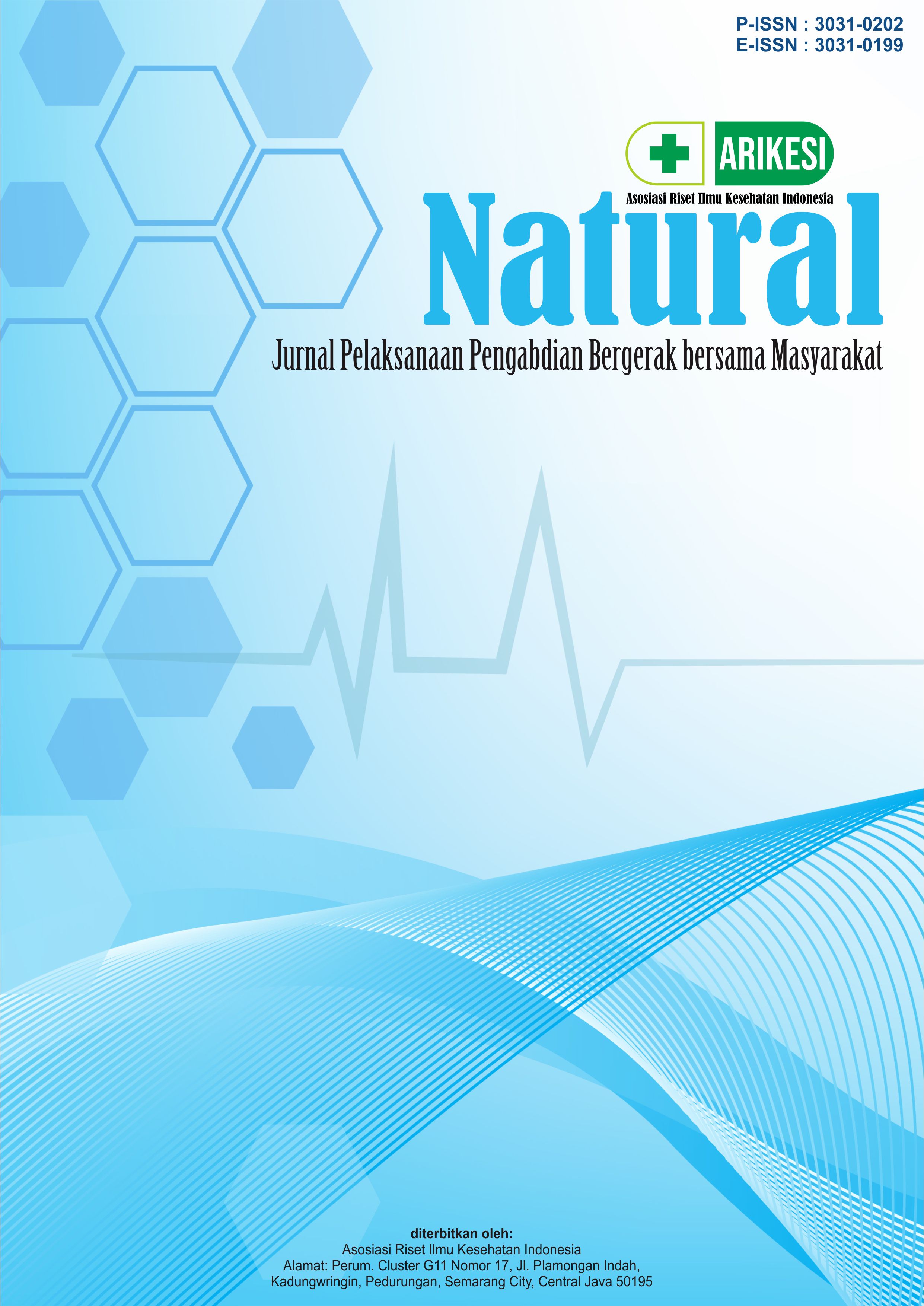Deteksi Dini Kejadian Hipotermia dengan Pemberian Penyuluhan Kesehatan pada Pasien Pasca Anestesi Spinal
DOI:
https://doi.org/10.61132/natural.v2i2.1224Keywords:
Hypothermia, Spinal Anesthesia, Health Education, Early DetectionAbstract
Hypothermia is a common complication following spinal anesthesia, which can lead to more severe consequences if not detected and treated early. Early detection of hypothermia is essential for preventing additional complications, such as cardiovascular instability, delayed recovery, or prolonged hospitalization. This study aims to analyze the effectiveness of providing health education in improving the early detection of hypothermia among patients after spinal anesthesia at Gemolong Regional Hospital. The research utilized a quantitative approach, applying a pre-experimental one-group pre-test and post-test design to measure the impact of the intervention. A total of 15 patients who underwent spinal anesthesia were selected as respondents and were provided with health education on recognizing the signs, risks, prevention, and treatment of hypothermia. Health education sessions were conducted through interactive presentations and written materials, emphasizing practical knowledge that could be directly applied by healthcare staff and patients. The primary data collection tool involved pre-test and post-test assessments to measure the participants' understanding of hypothermia and its management. The results indicated a significant improvement in the patients' understanding of hypothermia after receiving the health education. The average score of the post-test was noticeably higher than the pre-test, suggesting that the education effectively increased awareness and preparedness for early detection of hypothermia. This finding emphasizes the importance of integrating health education programs into clinical practice, especially for patients undergoing spinal anesthesia, to enhance early detection and reduce the risks of complications related to hypothermia.
Downloads
References
American Psychological Association. (2021). Stress and health: The role of leadership in nursing. Retrieved from https://www.apa.org
Bass, B. M., & Riggio, R. E. (2019). Transformational leadership. Psychology Press.
Cummings, G. G., Tate, K., Lee, S., Wong, C. A., Paananen, T., Micaroni, S. P. M., & Chatterjee, G. E. (2018). The relationship between leadership styles and outcomes in healthcare: A systematic review. Journal of Nursing Management, 26(5), 517-530. https://doi.org/10.1111/jonm.12579
Dewi, A., Hariyati, R. T. S., & Dewi, L. (2020). Pengembangan panduan peran dan fungsi top manajer keperawatan di rumah sakit. Jurnal Keperawatan Indonesia, 23(1), 15-25.
Fitrianti, G., & Romat, S. (2020). Pengaruh gaya kepemimpinan dan kerjasama tim terhadap kepuasan kerja karyawan PT. Len Industri (Persero). Jurnal Diversita, 6(2), 168-174.
Lazarus, R. S., & Folkman, S. (2017). Stress, appraisal, and coping. Springer Publishing Company.
Marr, L. N., & Billingsley, L. R. (2020). Leadership strategies to address workplace burnout in healthcare: A review. Healthcare Management Review, 45(4), 372-378. https://doi.org/10.1097/HMR.0000000000000265
McVicar, A. (2018). Workplace stress in nursing: A literature review. Journal of Advanced Nursing, 44(6), 633-642. https://doi.org/10.1111/jonm.12579
Potter, P. A., Perry, A. G., Stockert, P. A., & Hall, A. M. (2021). Fundamentals of nursing (10th ed.). Elsevier.
Robbins, S. P., & Judge, T. A. (2019). Organizational behavior (18th ed.). Pearson Education.
Saleh, U. S., & Qudaisat, I. (2021). The impact of transformational leadership on nurses’ job satisfaction and patient safety outcomes. Journal of Nursing Scholarship, 53(1), 70-78. https://doi.org/10.1111/jonm.13078
World Health Organization. (2020). Burn-out an "occupational phenomenon": International classification of diseases. Retrieved from https://www.who.int
Downloads
Published
How to Cite
Issue
Section
License
Copyright (c) 2025 Natural: Jurnal Pelaksanaan Pengabdian Bergerak bersama Masyarakat.

This work is licensed under a Creative Commons Attribution-ShareAlike 4.0 International License.





